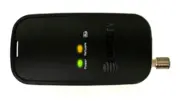Apartment dwellers don’t have it easy. Often times they suffer with slow internet and outdated cable television. Landlords are free to stop tenants from installing satellite TV unless they can do so without doing any permanent damage. This isn’t very fair to people in apartments who are often struggling to get by and who deserve the same access to information and entertainment that others do.
What a good landlord will do
Some landlords are known for wanting to suck every bit of profit they can from their tenants. I’ve lived in places like this, places where the landlord knows you really don’t have anywhere else to go and so they do as little as possible. Luckily, not all landlords are like that.
A good landlord will see the value in providing valuable services to tenants. People will pay more for things they really want, and what many people want today is entertainment. They want fast internet, they want good TV service, and they want choice. A good landlord will find ways to provide those things without creating more problems.
I understand why some landlords don’t want to allow people to put up satellite dishes. Drilling holes in the wall isn’t going to raise property values, and you might only be in the apartment a few years. Then the next person is there, potentially drilling even more holes in the wall.
The best solution is an “MDU” (multi-dwelling unit) satellite system. For historical reasons, this is sometimes also called a “master antenna TV” or MATV system.
Master antenna systems
Back in the mid-20th century, there was no cable TV. Apartment dwellers in cities used indoor antennas. If you were in an apartment 40 miles from the city center, you had troubles. Out there, especially back then, you needed a big antenna to get any TV reception at all. In fact, because TV back then relied heavily on channels 2-13, you needed an antenna that was way too big for an apartment’s patio.
The solution was a “master antenna” system. One antenna was put on the building, and the signal was fed to every apartment. Amplifiers were used to make sure that everyone got the best signal. Sometimes multiple antennas were used, aimed at individual stations, so the signal could be even better.
MATV systems continued to get more complex as cable television entered into the mix. Often times, cable companies would put equipment on site so that a few national channels could be mixed into the feed.
Master antenna systems gave way to “regular cable TV” in many areas, but in places where the cable company’s wires didn’t reach, it remained the best option.
Here comes SMATV
The next step was SMATV, or “satellite/master antenna TV.” I’m talking about the days of the big ugly dish here. An on-site satellite dish fed some national channels to the apartment complex, which combined with local channels from an antenna. That’s how a lot of apartment complexes got their TV for many years. The landlord more or less owned the system. They could choose to include TV service with the rent, or make tenants pay for it. The disadvantage was that there wasn’t always someone on site who knew how to use the equipment.
Today’s MDU systems
Today, the spirit of the “master antenna” is alive and well. Smart and savvy landlords will put up one satellite dish per building and use it to feed every single apartment. This gives tenants the option to get great satellite TV without drilling new holes. The satellite system installs side-by-side with cable or fiber internet. If you want, there’s an option where tenants can choose satellite or cable when they move in. (although, to me that’s not much of a choice, am I right? Satellite all the way!)
What to do as a renter
If you’re looking for a new apartment, make sure the landlord has pre-installed DIRECTV. If you are in an apartment already, make sure the landlord has the link to this article and reads the bit just below this.
What to do as a landlord
If you’re looking to add DIRECTV service to your apartments, contact the folks at Signal Connect, the commercial arm of Solid Signal. The number is 888-233-7563 and you can reach us during East Coast Business hours. We work with customers all over the country and we are an AT&T Preferred Dealer. Our staff can explain all the options to you. If it’s after hours, just fill in the form below.





